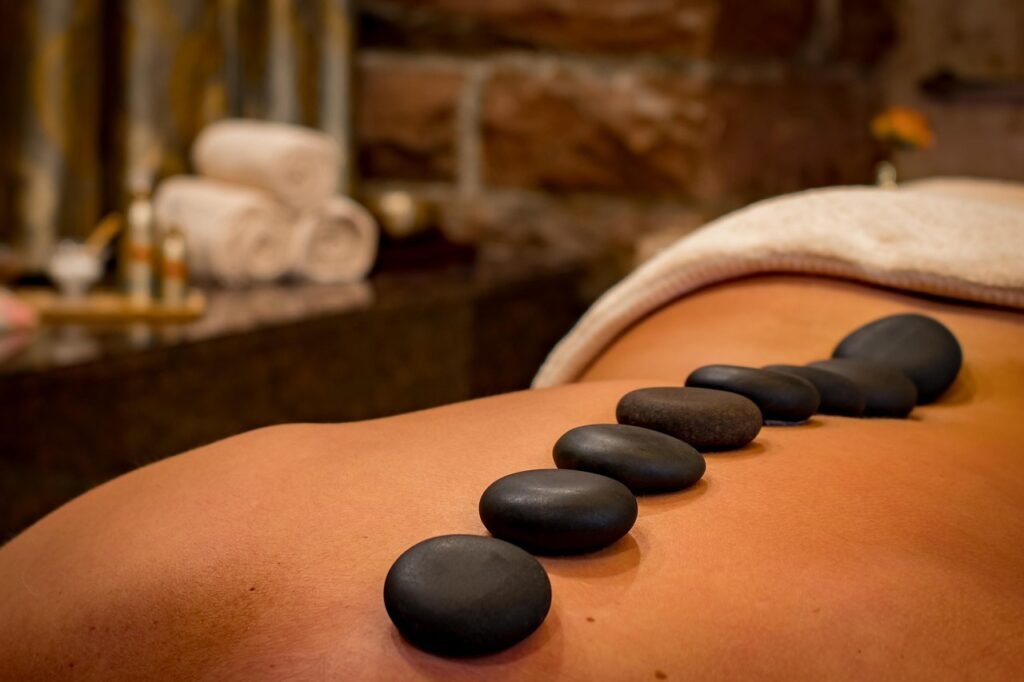Massage Therapy and Holistic Health Services
In today’s fast-paced and stressful world, taking care of our physical and mental well-being has become more important than ever. Massage therapy, with its myriad benefits, has emerged as a key component of holistic health services. This ancient practice not only provides relaxation and rejuvenation but also offers numerous health benefits that promote overall well-being. In this article, we will explore the world of massage therapy, its various techniques, and the benefits it brings to our lives.
Understanding Massage Therapy
Massage therapy is an ancient healing art that involves the manipulation of soft tissues in the body to promote relaxation, relieve muscle tension, and improve overall well-being. It has been practiced for centuries in various cultures around the world and has evolved into different techniques tailored to address specific needs and conditions.
The History of Massage Therapy
Massage therapy has a rich history dating back thousands of years. Its origins can be traced to ancient civilizations such as China, Egypt, and India, where it was used as a therapeutic practice to heal the body and balance the mind. Over time, massage techniques spread to different parts of the world, each culture adding its unique touch and approach to the practice.
Different Types of Massage Techniques
There are numerous massage techniques available today, each offering its own set of benefits and targeting specific areas of the body. Here are some popular types of massage techniques:
Swedish Massage
Swedish massage is the most common and well-known type of massage. It involves long, gliding strokes, kneading, and circular movements to relax the muscles, improve circulation, and reduce stress.
Deep Tissue Massage
Deep tissue massage focuses on the deeper layers of muscle and connective tissue. It uses intense pressure and slow strokes to alleviate chronic muscle tension, relieve pain, and improve mobility.
Sports Massage
Sports massage is designed for athletes and individuals involved in physical activities. It helps prevent injuries, promotes faster recovery, and enhances athletic performance by targeting specific muscle groups.
Hot Stone Massage
Hot stone massage incorporates heated stones placed on key points of the body. The warmth of the stones helps relax the muscles, relieve tension, and promote deep relaxation.
Thai Massage
Thai massage is a traditional form of massage that combines acupressure, assisted yoga postures, and stretching. It improves flexibility, relieves muscle and joint tension, and energizes the body.
Shiatsu Massage
Originating from Japan, shiatsu massage applies rhythmic pressure to specific points on the body. It aims to balance the body’s energy flow, alleviate pain, and promote overall well-being.
Reflexology
Reflexology focuses on applying pressure to specific points on the hands, feet, and ears. These points correspond to different organs and systems in the body, and stimulating them promotes relaxation and overall balance.
Aromatherapy Massage
Aromatherapy massage combines massage techniques with the use of essential oils. The aromatic scents and the therapeutic properties of the oils enhance relaxation, reduce stress, and uplift the mood.
Prenatal Massage
Prenatal massage is specifically designed for pregnant women to alleviate pregnancy-related discomforts such as back pain, swelling, and fatigue. It helps improve circulation and promotes relaxation during this special time.
Benefits of Massage Therapy
Massage therapy offers a wide range of benefits for both the body and the mind. Here are some key advantages of incorporating massage into your wellness routine:
Stress and Anxiety Relief
Massage therapy helps reduce stress levels by promoting the release of endorphins, the body’s natural feel-good hormones. It induces relaxation, calms the mind, and reduces anxiety and tension.
Pain Management
Massage can effectively alleviate pain caused by muscle tension, injuries, or chronic conditions such as arthritis. It targets specific areas of discomfort and promotes the release of pain-relieving hormones.
Improved Blood Circulation
The manipulation of soft tissues during a massage improves blood circulation, allowing oxygen and nutrients to reach the cells more efficiently. This increased circulation helps flush out toxins and promotes overall health.
To experience these benefits and more, check out Unveiling the Magic of Our Massage Therapy Services.
Enhanced Flexibility and Range of Motion
Regular massage sessions can help improve flexibility and range of motion by stretching and elongating the muscles and connective tissues. This is particularly beneficial for athletes and individuals with restricted mobility.
Boosted Immune System
Massage therapy stimulates the lymphatic system, which is responsible for removing waste and toxins from the body. By enhancing lymph flow, massage boosts the immune system’s ability to fight off infections and diseases.
Massage Therapy for Better Sleep Quality
Massage promotes relaxation and reduces stress, helping individuals achieve a state of deep relaxation. This, in turn, improves sleep quality and enhances overall well-being.

Injury Rehabilitation
For individuals recovering from injuries, massage therapy can aid in the rehabilitation process. It helps reduce pain, inflammation, and scar tissue formation, allowing the body to heal more effectively.
Mental and Emotional Well-being
Massage therapy has a positive impact on mental and emotional well-being. It helps reduce symptoms of depression and anxiety, improves mood, and promotes a sense of overall happiness and contentment.
Improved Posture
Regular massage sessions can help correct postural imbalances by releasing muscle tension and realigning the body’s structure. This leads to improved posture and a reduction in associated discomfort.
For a comprehensive approach to holistic health, massage therapy can be an excellent complement to chiropractic treatments. Learn more about how massage therapy and chiropractic care work together here.
What to Expect During a Massage Session
Before scheduling a massage session, it’s essential to understand what to expect during the process. Here is acontinued…
brief overview of what typically happens during a massage session:
Consultation and Assessment
At the beginning of your session, the massage therapist will conduct a consultation to understand your specific needs, medical history, and any areas of concern. This helps them tailor the massage technique to address your individual requirements.
Choosing the Right Massage Technique
Based on your consultation, the massage therapist will recommend the most suitable massage technique for you. They will explain the benefits of the technique and ensure that you are comfortable with their recommendation.
The Massage Session
During the massage session, you will be asked to lie down on a comfortable massage table while the therapist applies the chosen technique. They will use various strokes, pressures, and movements to target specific muscles and promote relaxation and healing.
Aftercare and Follow-up
After the massage session, the therapist may provide you with aftercare instructions, such as drinking plenty of water, avoiding strenuous activities, or applying heat or ice to specific areas. They may also recommend follow-up sessions for ongoing care and maintenance.
Finding the Right Massage Therapist
To ensure a positive and effective massage experience, it’s important to find the right massage therapist. Here are some factors to consider when selecting a massage therapist:
Massage Therapy Recommendations and Referrals
Ask friends, family, or healthcare professionals for recommendations and referrals. Personal experiences and word-of-mouth recommendations can provide valuable insights into the quality and professionalism of a massage therapist.
Credentials and Certifications
Check the therapist’s credentials and certifications to ensure they have received proper training and education in massage therapy. Look for certifications from recognized organizations and associations in the field.
Experience and Specializations
Inquire about the therapist’s experience and any specialized areas of focus. Some therapists may have expertise in specific techniques or conditions, which can be beneficial if you have particular needs or preferences.
Client Reviews and Testimonials
Read client reviews and testimonials to get a sense of the therapist’s reputation and the experiences of previous clients. Online platforms and directories often feature reviews that can help you make an informed decision.
Incorporating Massage Therapy into Your Wellness Routine
To make the most of massage therapy, consider incorporating it into your regular wellness routine. Here are some tips for doing so:
Frequency and Duration of Sessions
Determine how often you would like to receive massages based on your needs and budget. Weekly, bi-weekly, or monthly sessions can provide ongoing benefits and help maintain a state of well-being.
Combining Massage with Other Holistic Practices
Consider complementing your massage therapy with other holistic practices such as yoga, meditation, or acupuncture. These practices work synergistically to promote overall wellness and balance.
Creating a Relaxing Environment at Home
Bring the relaxation of a massage session into your home by creating a peaceful and soothing environment. Use soft lighting, calming music, and aromatherapy diffusers to enhance your at-home relaxation experience.
Self-Massage Techniques
Learn simple self-massage techniques that you can perform between professional sessions. These techniques can help relieve minor muscle tension and provide relaxation on a daily basis.
Massage therapy is an integral part of holistic health services, offering numerous benefits for the mind, body, and spirit. From stress relief and pain management to improved circulation and mental well-being, massage therapy has something to offer everyone. By incorporating massage into your wellness routine and finding the right therapist, you can unlock the transformative power of this ancient healing art.
Frequently Asked Questions
1. How long should a massage session last?
Massage sessions can vary in length, typically ranging from 30 minutes to 90 minutes. The duration depends on your preferences, needs, and the specific technique being used.
2. Is massage therapy suitable for everyone?
Massage therapy is generally safe and beneficial for most people. However, certain medical conditions or contraindications may require modifications or precautions. It’s important to consult with a qualified massage therapist and inform them of any underlying health concerns before receiving a massage.
3. Will a massage be painful?
Massage should not be painful. However, certain techniques, such as deep tissue massage, may involve some discomfort or pressure. It’s crucial to communicate with your therapist and let them know if the pressure is too intense or if you experience any pain during the session.
4. How often should I get a massage?
The frequency of massages depends on your individual needs and goals. Some people benefit from regular weekly or monthly sessions, while others may choose to receive massages on an as-needed basis. Discuss your preferences and goals with your massage therapist to determine the ideal frequency for you.
5. Can I receive a massage while pregnant?
Yes, prenatal massage is specifically designed for pregnant women and can provide relief from pregnancy-related discomforts. However, it’s essential to choose a massage therapist who is trained in prenatal massage techniques and inform them of your pregnancy to ensure a safe and comfortable experience.





